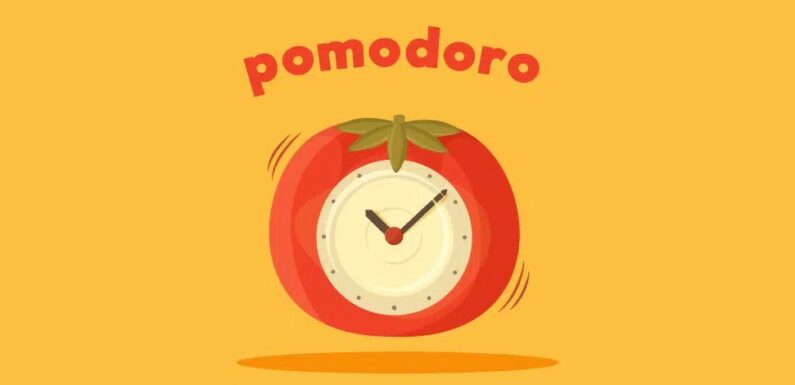
Introduction –
Now, efficacious time management can be done easily, only if we think of tomatoes compared to the hours. Initially, it may sound silly, but trust me on this one, there are billions of people around the globe who are using the life-changing power of the technique of Pomodoro. In Italian language, Pomodoro means a tomato. It is a well-known time management method which asks you to alternate Pomodoro’s i.e. to concentrate on work sessions – with regular breaks (short ones) in order to manage and maintain sustained focus and keep off from mental fatigue. So, lets have a look at the famous pomodoro technique. This technique was developed in the late 1980s by the University student named Francesco Cirillo. He was the one who was struggling to accomplish tasks like studies and assignments.
How Was Pomodoro Technique Born-?
So, when he felt overwhelmed, he decided that he would focus on studies for 10 minutes, which will be a focused time for study. Encouraged by this decision, he found a tomato shaped kitchen timer and the pomodoro technique was born. Cirillo also went ahead and wrote a 130-page book about this method. But the biggest strength lies in the simplicity of it. All you need to do is to get a T-Do-List and a timer. Set your timer for approximately 25 minutes and concentrate on the single work until the time rings. When your work is completed, mark off one pomodoro & record what you finished. Later, enjoy the 5-minutes break. And, after you have completed 4 pomodoro, you can take a 15-30 minutes restorative breaks.
Core Method of Pomodoro –
Moreover, the 25 minutes of work races is the core or the main method, but there are 3 rules which the Pomodoro technique includes, for getting most out of every interval. The first rule is to cut down the complicated projects into smaller tasks. If your tasks need 4 pomodoro then you need to divide it into small, actionable steps. If you stick to this rule, then there will be sure shot progress. The second rule is, the small tasks or works should go together. Any work that takes less than 1 pomodoro should be combined with other simple works. For instance, writing off a cheque, making an appointment and so on can go in one session. And, the third rule is that, once a pomodoro is set, it should ring or give alarm. A pomodoro is an undividable unit of time and it cannot be separated or broken. Plus, you should not get distracted by e-mails, incoming chats or text messages and so on.
Using Pen & Paper in Pomodoro –
And, in case if you are distracted then keep that distractions for later on to attend. Any digital task manager or computerised task manager like To-Do-List is a great place for these. You can also use pen and paper. If you get any kind of distractions or urgent messages then you can take a 5-minute break and begin again. Also, Cirillo suggests that you trace the interruptions as they happen and reflect on how to avert them in your next pomodoro session. Plus, this rule applies even if you end your tasks before the timer goes ringing. Then, use the remaining time for re-learning and improving skills and scope of knowledge. The only thing, that makes a pomodoro effective is the random silliness of using a tomato as a stand-in for units of time contradicts these techniques serious efficaciousness in assisting people get things done or work completed.
Boosting Productivity – How -?
The things, that makes this method sui generis & suits in boosting productivity are that – firstly, it makes easy to begin the work. Next, it has a procrastination busting strategy, also, it helps in combating distractions and you become more aware about where your time is going- whether its fruitful or just a waste.


